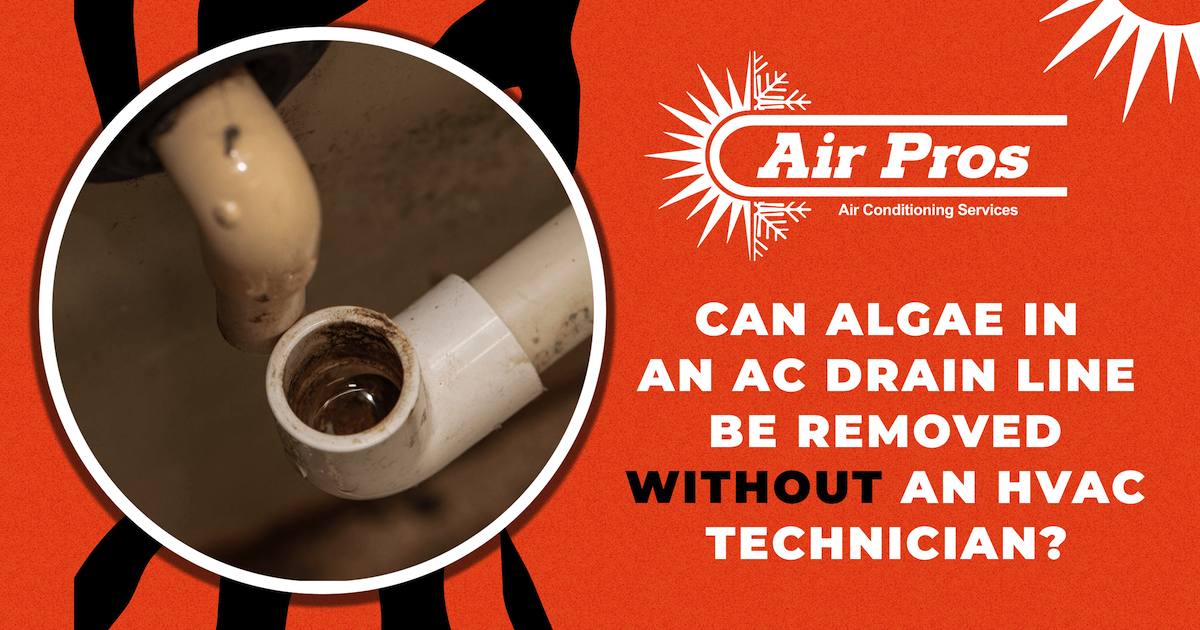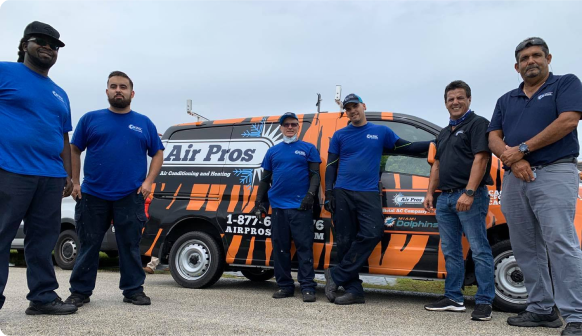Modern air conditioners have drainage systems that prevent water from accumulating, overflowing, and flooding your home. Algae can grow wherever there’s water. These microorganisms can clog up an AC drain line or contribute to an already growing problem. When you notice signs of trouble, it’s time to act. But you may not need to call a technician—yet.
Is Your Drain Line Clogged?
Condensation occurs naturally as hot air is converted to cooler air inside the system. The flow of water through the drain line varies, but moisture can persist; and where it does, algae can grow. These are some common signs that your drain line is clogged:
- The drain pan is full of water.
- Musty odors blowing into your home.
- Higher humidity in your home.
- Water damage around the air handler.
- Your air conditioner is working less effectively
- The AC will not turn on.
Cleaning the AC Drain Line
Clean your drain line when you notice algae and to prevent clogs. This is generally a simple process and does not require an HVAC professional. It can even avoid having to call a technician for help. The basic process is as follows:
- Shut Off the AC: Aside from turning off the thermostat, also switch the circuit breaker off in the electrical panel. If your unit has a service disconnect, turn this off as well.
- Locate the AC Drain Line: The drain line is made of PVC pipe. It leads to the drain pan from the outdoor unit. Before moving on to the drain line, remove excess water from the pan with rags or a wet/dry vacuum, and wash the drain pan with soap and water to remove mold and bacteria.
- Access the Drain Line: Remove the cap from the T-shaped vent tee at the drain pipe, and check for blockages in the line. A wire brush can be used to remove a blockage close to the opening. Debris further in the line will need to be vacuumed out. Once you’ve secured a wet/dry vacuum, attach it to the drain opening with duct tape and run the vacuum for about a minute.
- Clean the Line with Vinegar: Using a funnel, pour ¼ cup of distilled vinegar into the drain and let it sit for about 30 minutes. You can add more vinegar if necessary and/or wait longer to flush out the line. The vinegar will break down algae that’s built up in the drain pipe. Then flush out the pipe with water.
- See If the Line Is Unclogged: Where you removed the cap at the indoor unit, pour in some more water. Check the outdoor unit to see if water is draining properly. Repeat the process if the line still appears clogged. Also consider calling a professional if this is the case.
The drain line should be cleaned monthly to kill algae and bacteria and ensure your HVAC system runs at peak performance and efficiency.
Algae-Specific Products
If you see algae, don’t panic. Pour a cup of bleach directly into the condensation line after opening the tee. This should be done twice a year if your AC drain line is prone to algal growth. Algae tablets or liquid additives can be used to prevent further issues. But if you have a clog caused by algae, you can use a wet/dry vacuum; connect the hose to the drain pipe outside and attempt to vacuum out the clog.
What About White Slime?
Although people often think otherwise, white slime isn’t algae. It is organic matter that forms a film around colonies of bacteria. White slime isn’t harmful, but it can block an AC drain line, so must be cleaned and vacuumed out to avoid an overflow or mold problem. The buildup can be prevented by cleaning the drain line regularly. Changing the AC filter on a regular basis also helps; dust and dirt on the filter and coil can be a food source for bacteria. Persistent issues should be addressed by a properly equipped and trained professional.
Contact Air Pros to Clean Algae from an AC Drain Line
When you have a stubborn algae problem in your AC drain line, Air Pros has trained, experienced, and fully equipped technicians who can resolve it. We serve residential clients in Florida, Georgia, Texas, Colorado, and Washington. Our company provides 24/7 AC repair, so when you need a professional, we’ll be there to help. To request service, reach out to us online or call 844-629-1691.











